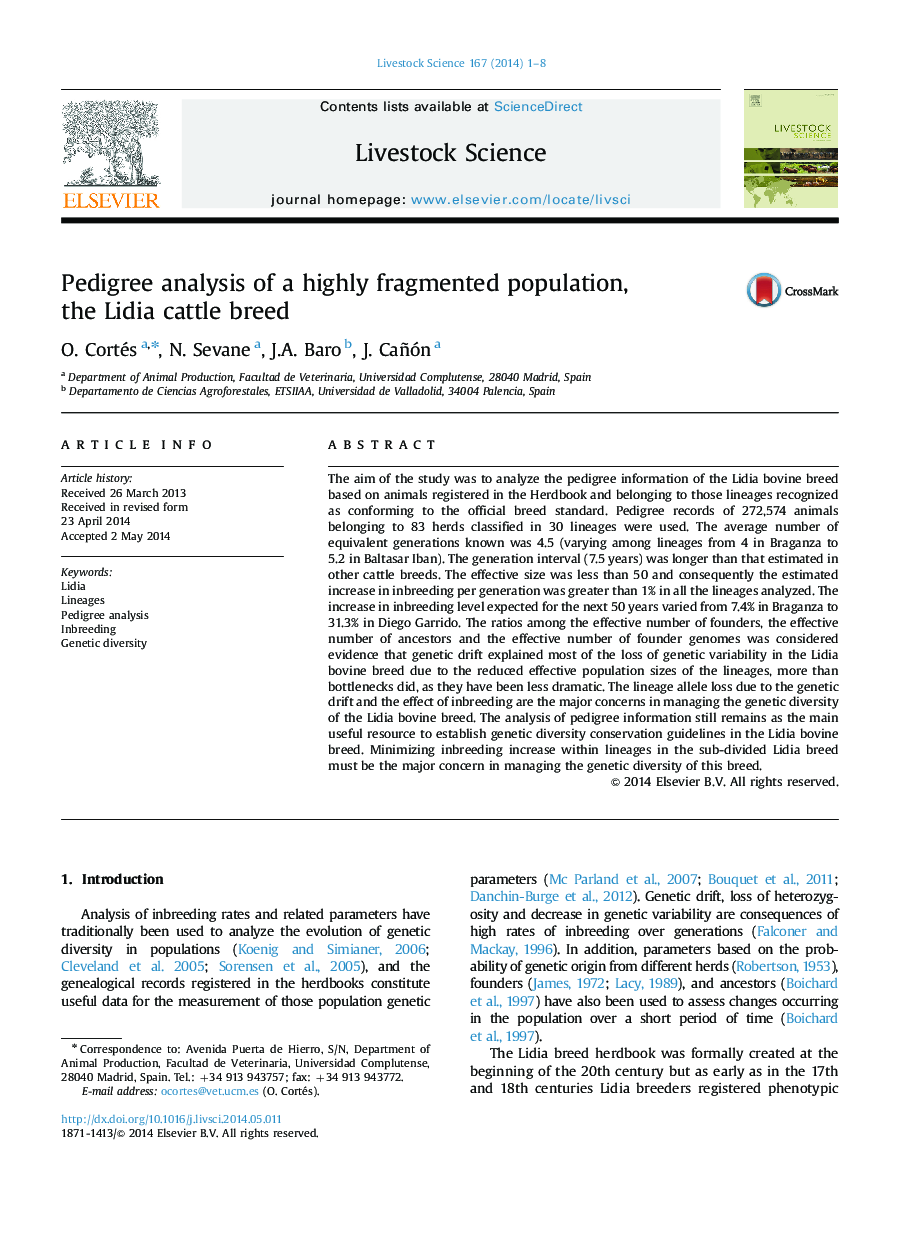| Article ID | Journal | Published Year | Pages | File Type |
|---|---|---|---|---|
| 5790067 | Livestock Science | 2014 | 8 Pages |
â¢Pedigree information on those herds previously analyzed by DNA markers of the Lidia bovine breed will be analyzed.â¢The pedigree analysis showed higher inbreeding coefficients in the Lidia breed lineages.â¢Each lineage is the reservoir of a part of the original genetic variability and its loss would reduce the total genetic variability that could not be regenerated.â¢Lineages effective population sizes computed or the inbreeding rates per generation within lineages, it remains below the FAO recommendations.â¢Low effective size of the lineages jeopardize its genetic sustainability and, as consequence, the genetic health of the breed.
The aim of the study was to analyze the pedigree information of the Lidia bovine breed based on animals registered in the Herdbook and belonging to those lineages recognized as conforming to the official breed standard. Pedigree records of 272,574 animals belonging to 83 herds classified in 30 lineages were used. The average number of equivalent generations known was 4.5 (varying among lineages from 4 in Braganza to 5.2 in Baltasar Iban). The generation interval (7.5 years) was longer than that estimated in other cattle breeds. The effective size was less than 50 and consequently the estimated increase in inbreeding per generation was greater than 1% in all the lineages analyzed. The increase in inbreeding level expected for the next 50 years varied from 7.4% in Braganza to 31.3% in Diego Garrido. The ratios among the effective number of founders, the effective number of ancestors and the effective number of founder genomes was considered evidence that genetic drift explained most of the loss of genetic variability in the Lidia bovine breed due to the reduced effective population sizes of the lineages, more than bottlenecks did, as they have been less dramatic. The lineage allele loss due to the genetic drift and the effect of inbreeding are the major concerns in managing the genetic diversity of the Lidia bovine breed. The analysis of pedigree information still remains as the main useful resource to establish genetic diversity conservation guidelines in the Lidia bovine breed. Minimizing inbreeding increase within lineages in the sub-divided Lidia breed must be the major concern in managing the genetic diversity of this breed.
